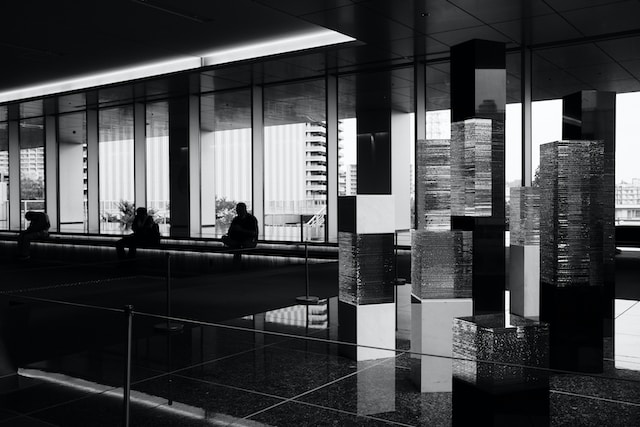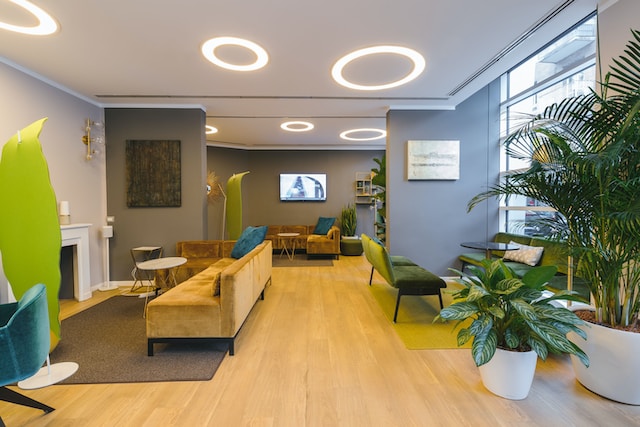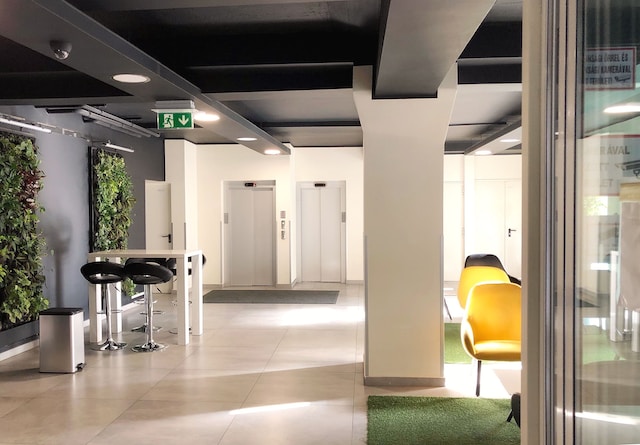
As businesses evolve and freelancers diversify their working arrangements, the notion of office space has seen a significant shift. For many, office spaces have moved from being permanent, often costly, fixtures to flexible solutions that adapt to the changing needs of the business. Regardless of your professional path, understanding the ins and outs of your office lease agreement is paramount, particularly for businesses and freelancers in the UK who are contemplating a shift to a more flexible office solution.
A significant, yet often overlooked, component of office leasing is Common Area Maintenance (CAM) charges. CAM charges refer to the cost borne by tenants for the upkeep and maintenance of common areas in a commercial property, such as lobbies, hallways, restrooms, parking lots, and any shared amenities. The details of these charges can be complex and can impact your overall office costs substantially.
This blog post aims to demystify CAM charges, explaining what they are, how they are calculated, and their importance when selecting your next office space. Whether you’re a seasoned business owner, a start-up on the verge of expansion, or a freelancer looking for a more formal office setup, this comprehensive guide to CAM charges will provide you with valuable insights to help make the right decision for your business.
Stay tuned as we delve deeper into understanding CAM charges, their impact on your business finances, and how you can negotiate these charges effectively to suit your business needs.
Understanding Common Area Maintenance Charges
Before we delve into the intricacies of CAM charges, let’s first clarify what we mean by this term. Common Area Maintenance (CAM) charges are costs that tenants pay, in addition to their base rent, to help cover the expenses associated with common area maintenance fees and with the upkeep of shared or common areas in a commercial property. These are areas that benefit all tenants and may include the building lobby, elevators, restrooms, parking lots, hallways, landscaping, and shared recreational amenities, among others.
What Do CAM Charges Cover?
While the specifics can vary based on the property and lease agreement, CAM charges typically cover a range of expenses:
- Property Insurance: This is the cost of insuring the building and common areas. It is a vital element of CAM charges as it protects the property owner and tenants from potential property damage and liability claims.
- Property Taxes: Property taxes, the tax that the local government levies on the property, are usually part of CAM charges. This ensures that the property owner isn’t solely responsible for these taxes.
- Landscaping: The aesthetic appeal of a property is crucial for creating a positive impression. Thus, landscaping costs, including garden maintenance, snow removal, and leaf clearance, often form part of CAM charges.
- Security: Maintaining a safe and secure environment is of paramount importance in any commercial property. Security expenses, which may include CCTV monitoring, security personnel, and alarm systems, are covered under CAM charges.
- Janitorial Services: Keeping the common areas clean and tidy is a shared responsibility and cost. Janitorial services like daily cleaning, waste removal, and periodic deep cleaning are usually included in CAM charges.
- Parking Maintenance: If the property includes a parking area, the costs for its upkeep, including line marking, lighting, snow removal, and regular cleaning, are also part of CAM charges.

How Are CAM Charges Calculated?
The calculation of CAM charges may vary from one lease agreement to another. Typically, the total annual CAM costs are divided among the tenants, often based on the proportion of the total gross leasable area, that each tenant occupies. For instance, if a business rents 20% of the total leasable space in a building, they may be responsible for paying 20% of the total CAM charges.
However, some leases may stipulate a fixed CAM charge or may include a cap on monthly CAM charges themselves, ensuring that the tenant’s share of these costs does not exceed a predetermined amount. It is essential to understand the specifics of your lease agreement to avoid unexpected costs down the line.
The Importance of CAM Charges for Tenants
CAM charges, though an added expense on top of your base rent, play a crucial role in ensuring a positive, productive, and safe office environment. Here are some reasons why CAM charges are so important for tenants:
Maintaining a Professional Environment
First impressions are invaluable in business. When clients, investors, or potential employees visit your office, the appearance and maintenance of common areas greatly influence their perception of your business. A dirty parking lot, a poorly maintained lobby, or unkempt restrooms can negatively affect your business reputation. CAM charges ensure that these shared spaces are always presentable and professional, contributing to a positive image of your company.
Enhancing Employee Satisfaction and Productivity
A clean, well-maintained, and aesthetically pleasing environment can significantly improve employee satisfaction. The upkeep of shared facilities such as restrooms, cafeterias, and lounges contributes to employees’ overall well-being, which, in turn, enhances productivity. Furthermore, ensuring that amenities like elevators, air conditioning, and heating systems function optimally affects employees’ comfort and satisfaction at work, making CAM charges a worthy investment.
Ensuring the Safety and Accessibility of the Premises
Safety is a fundamental aspect of any workplace. Ensuring safe access to the building, maintaining emergency exits, providing security personnel, and keeping all common areas well-lit and secure are crucial responsibilities covered under CAM charges. These measures protect your business, your employees, and your clients, providing peace of mind for everyone who uses the premises.
Compliance with Lease Agreements
Finally, paying CAM fees and charges is often a requirement stipulated in commercial lease agreements. Failure to pay these charges can result in lease violations, leading to penalties or, in some cases, eviction. Therefore, understanding and complying with your CAM charges obligations helps maintain a good relationship with your landlord and ensures uninterrupted use of your leased space.
Now that we’ve established why CAM charges are essential let’s delve into the differences between commercial and residential leases in terms of CAM charges and how these distinctions can impact businesses and freelancers.

CAM Charges: Differences between Commercial and Residential Leases
When it comes to leasing, it’s crucial to understand that commercial and residential agreements differ substantially, and one key area of difference lies in the application of CAM charges.
Understanding the Distinction
In residential leases, tenants typically pay a flat rental fee that includes costs associated with the upkeep of common areas. This means that expenses related to cleaning, gardening, security, and more are usually factored into the monthly rent amount, so residential tenants rarely see separate CAM charges. The landlord assumes the responsibility for these expenses and manages the common areas.
Commercial leases, on the other hand, usually involve CAM charges as separate line items, in addition to the base rent. This is because commercial properties often have extensive common areas and additional facilities (like large parking lots, elevators, and shared conference rooms) that necessitate regular maintenance and incur significant costs. These charges are typically shared among the tenants, proportionate to the space they occupy.
The Impact on Businesses and Freelancers
For businesses and freelancers, this distinction is crucial to understand as it impacts your overall budgeting and cost planning. Unlike residential leases, where you pay a consolidated amount, commercial leases require you to account for CAM charges in your budget separately. It’s not just the rent; these additional costs could significantly impact your bottom line.
Understanding CAM charges allows businesses and freelancers to anticipate these costs and incorporate them into their financial plans. It also provides a clearer perspective when comparing different leasing options. A property with lower rent but high CAM charges might end up costing more than a property with higher rent but lower CAM charges.

How CAM Charges Impact Your Business Finances
CAM charges can significantly increase operating costs and influence your business’s financial health. Therefore, understanding their financial implications is key to maintaining a healthy bottom line and ensuring the financial sustainability of your operations.
Explaining the Financial Aspect of CAM Charges
As previously discussed, CAM charges are over and above your base rent and cover the costs associated with maintaining common areas in commercial properties. These charges can vary widely based on the size and location of the property, the amenities it provides, and the specifics of your lease agreement.
While you may be focused primarily on the base rent when considering an office space, overlooking CAM charges can lead to unexpected costs that might strain your business finances. These costs can add up, especially in large commercial properties with extensive amenities and services.
How to Budget for CAM Charges
To effectively budget for CAM charges, you need to take several steps:
- Understand Your Lease Agreement: Review your lease agreement to understand how CAM charges are calculated, whether there’s a fixed cost or if it varies, and if there’s a cap on how much it can increase annually.
- Anticipate Annual Increases: CAM charges can increase annually due to rising operational costs. If your lease agreement allows for this, factor these potential increases into your long-term budgeting.
- Ask for a Breakdown: Request a detailed breakdown of CAM charges from the property manager. This will give you an understanding of what’s included and help you identify any potential areas of negotiation.
The Effect of CAM Charges on Your Bottom Line
CAM charges directly impact your business’s bottom line as they form a significant part of your actual costs and operational expenses. High CAM charges can eat into your profits, especially if they weren’t accounted for in the initial budgeting process.
Therefore, consider CAM charges as a vital element when comparing different office spaces. An office space with low base rent but high CAM charges might not be as cost-effective as one with a higher base rent but lower CAM charges.

Negotiating CAM Charges: What You Need to Know
While CAM charges are common in commercial leases, they are not always set in stone. With the right approach and a clear understanding of your rights as a tenant, you may be able to negotiate these charges to better suit your business’s budget.
Reviewing the Lease Agreement
Before you start any negotiation, make sure you fully understand the terms and conditions of your lease agreement. It’s not unusual for these documents to be complex and filled with legal jargon, so consider consulting with a legal professional if you find it difficult to interpret. Look for sections that detail how CAM charges are calculated, what they include, and how they can be modified over time.
Knowing Your Rights as a Tenant
As a tenant, you have certain rights when it comes to CAM charges:
- Transparency: You have the right to request a detailed breakdown of CAM charges to understand what you’re paying for. This should include a clear list of all items included in the CAM charges.
- Cap on Increases: Depending on your lease agreement, you may have the right to negotiate a cap on annual increases to CAM charges. This can protect you from unexpected hikes in maintenance costs.
- Dispute Resolution: If you believe a certain CAM charge is unjustified or incorrectly calculated, you have the right to dispute it. Make sure you understand the process for this as laid out in your lease agreement.
Tips for Negotiating CAM Charges
Here are some tips to help you negotiate CAM charges effectively:
- Do Your Homework: Research typical CAM charges for similar properties in the area. This will give you a benchmark to compare against and can strengthen your negotiating position.
- Seek Professional Help: If you’re unsure about negotiating these charges yourself, consider enlisting the help of a commercial real estate broker (such as Prime Office Space) or attorney who has experience with this type of negotiation.
- Ask for a Cap: Consider negotiating a cap on annual CAM charge increases to protect your business from sudden, unexpected costs.
- Negotiate Exclusions: If your lease agreement includes CAM charges for services or amenities your business doesn’t use, try to negotiate these out of your agreement.

How Prime Office Space Can Help
Finding the perfect office space that caters to your specific needs and fits within your budget can be a daunting task. This is where Prime Office Space steps in, streamlining the process and offering expert guidance every step of the way.
Introduction to Prime Office Space and Its Offerings
Prime Office Space is a dedicated office brokerage service, committed to helping businesses, organisations, and freelancers across the UK find the right workspace. Our team of expert consultants are equipped to cater to a wide range of requirements, whether you’re searching for a serviced, managed, temporary, flexible, or traditional office space.
How Prime Office Space Can Assist in Finding the Right Space
Understanding your unique needs and budget, our consultants perform a detailed search to find office spaces that align with your requirements. We simplify the process, sparing you the time and stress of browsing through countless listings and performing numerous site visits.
The Role of Prime Office Space in Negotiation of Rental Agreements
But our assistance doesn’t stop at finding the right office space. We also play a crucial role in negotiating rental agreements. With a thorough understanding of commercial lease intricacies, including CAM charges, our team can help you negotiate terms that are favourable and fair, ensuring you aren’t caught off guard with unexpected expenses.
The Benefit of Using Prime Office Space’s Extensive Database
With what is possibly the UK’s most comprehensive database of currently available office spaces, Prime Office Space can provide a wide range of options to suit your business needs. Our database covers a variety of styles, sizes, and layouts, from serviced office spaces and business centre accommodation to office complexes, units, lofts, and warehouses. The spaces are available either fully furnished and cabled, or unfurnished ready for your own configuration.
Wrap Up
Understanding CAM charges can save your business from unforeseen costs and help maintain a healthy bottom line. It’s a key component in making an informed decision when choosing an office space and negotiating a lease agreement.
At Prime Office Space, we understand the complexities of commercial leases and are here to assist you every step of the way – from finding the right office space to negotiating fair terms in your lease agreement.

